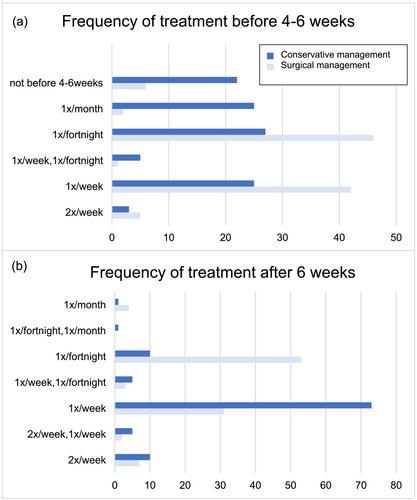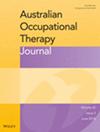Current clinical practice patterns and perspectives of Australian hand therapists during the treatment of adults with distal radius fracture: A national survey
Abstract
Introduction
Successful return to pre-injury occupational performance following distal radius fracture (DRF) may be influenced by person and environment factors such as pain, age, social support, and socioeconomic status. The primary aim of this study was to explore Australian hand therapists' current clinical practice and determine whether they consider these factors during the management of DRF.
Methods
A mixed methods online survey was distributed to members of the Australian Hand Therapy Association. Descriptive statistics were used to examine the quantitative data, and the qualitative data were analysed by content analysis.
Results
Of the 120 members who completed the survey, 68% were occupational therapists and 32% were physiotherapists with 74% in the private and 26% in the public health-care setting. Most factors perceived to influence recovery were consistent with person factors and a biomechanical approach. Other factors related to occupational performance, such as social and leisure skills, environment and culture were reported less often. When asked about defining occupational performance, the key categories identified through qualitative open responses were ‘performing meaningful activities/occupations’, ‘performing work/employment’, and ‘completing activities/function’.
Conclusion
The data suggest that hand therapists in Australia primarily identify person factors as key to recovery after DRF. Context and environmental factors that influence occupational performance did not appear to be considered as often during treatment or when defining occupational performance. Further research is needed to explore the contextual and environmental factors that influence hand therapy intervention and determine whether they play a role in the successful return to pre-injury occupational performance following DRF.
Consumer and community involvement
The survey was conceptualised by the research team, which included two experienced hand therapists and piloted with 10 consumers. Hand therapists (consumers) of various years of experience and discipline (i.e., occupational therapy and physiotherapy) provided feedback to improve the survey in terms of content, comprehensibility, and length. No clients/patients of hand therapists were involved in the development of the survey or the study, and the consumers of the study were considered hand therapists.


 求助内容:
求助内容: 应助结果提醒方式:
应助结果提醒方式:


